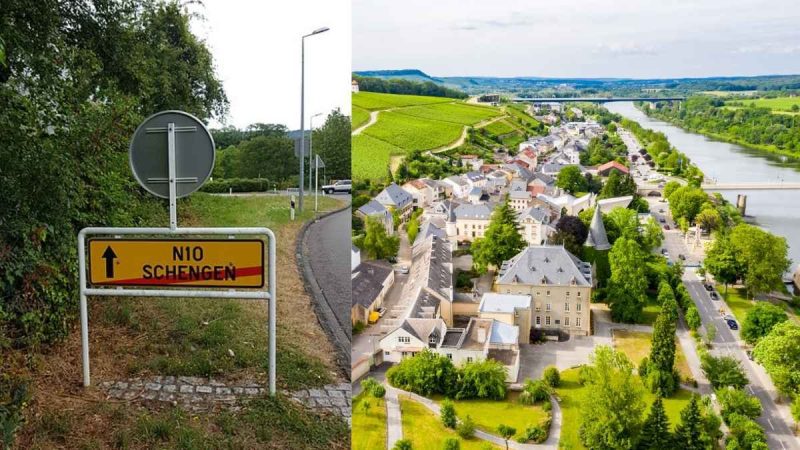The term, ‘Schengen’ has become synonymous with European travel freedom, but its origins trace back to a small village in Luxembourg that holds significant historical and cultural importance. Schengen Village is the birthplace of the Schengen Agreement, which transformed the way people travel across Europe.
About Schengen Village
Schengen Village is a quaint settlement. Its charm lies in its scenic landscapes, wine production, and a rich historical background that dates back centuries. The village’s location near the confluence of the Moselle River makes it an attractive spot for tourists and locals alike, drawn to its natural beauty and tranquillity. However, it was not until the late 20th century that Schengen gained international recognition, forever linking its name to European integration.
On June 14, 1985, five countries—Belgium, France, Germany, Luxembourg, and the Netherlands—gathered at a hotel in Schengen Village to sign the Schengen Agreement. This agreement aimed to abolish internal border controls between the signatory countries, allowing for the free movement of people and goods. The decision to meet in Schengen was symbolic, as the village represented a crossroads of cultures and a commitment to cooperation.
The Schengen Agreement was an ambitious project that sought to strengthen the sense of European identity while promoting economic growth and tourism. It was rooted in the belief that free movement would lead to greater interconnectedness among nations.
Tourist Attractions?
Best known for its association with the Schengen Agreement, this charming village offers a unique blend of culture, history, and natural beauty.
The European Museum celebrates the Schengen Agreement and its significance in fostering European unity. A monument commemorating the signing of the Schengen Agreement, the Schengen Pillar is a striking symbol of unity and cooperation among European nations. The scenic Moselle River is perfect for leisurely boat cruises.
Schengen is located in a renowned wine-producing area, particularly known for its Riesling and other white wines. Visitors can explore local vineyards, learn about the winemaking process, and participate in wine-tasting sessions. The area around Schengen is crisscrossed with biking and walking paths that offer a chance to explore the beautiful countryside. Cycling along the Moselle River allows you to experience the scenic vineyards, charming villages, and breathtaking landscapes at a leisurely pace.
So, if you find yourself in Luxembourg, take the time to explore this charming village and discover the stories that shaped modern Europe.
Cover image credits: Wikimedia Commons

